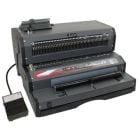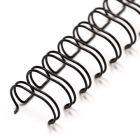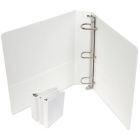Doing Layout For Your Book
A big part of giving your book that bookstore-ready professional appearance is proper layout and typesetting. Here are a few tips to get you started.
Main Fonts
While there is a lot to be said for getting creative when it comes to the use of fonts in some situations, for a book-length block of text, you will want to stick to something that is, above all, readable and not straining to the eyes or distracting in any way. The vat majority of books use some sort of basic serif font, and there is no reason that you shouldn't so the same. These fonts are pleasing to the eye, and are the industry standard for a reason.
Header Fonts
Here is where you can get into more unusual and eye-catching fonts if you like. A lot of great books have used fonts in the chapter headings that help to convey the theme and feel of the book itself. While some may view this as gimmicky, if it adds to the overall appeal of the book, why not do it? This sort of font use can apply to all situations, of course, from comedic to stately and staid. Just do whatever looks right to you, and don't be afraid to gather some opinions from trusted friends and colleagues.
Software
While word processing software programs such as MS Word, WordPerfect, and even the highly regarded free program Open Office are great for writing and compiling your text, they are not up to the task of doing book layout and typesetting. For that, you will want to have a program such as Adobe InDesign or QuarkXPress, or something similar. There are even some free programs available, but you should check out as many reviews as you can before placing your book in their hands.
Proofread It
This should go without saying, but we're going to say it anyway. There are few worse feelings than viewing the completed version of your published work and finding spelling and grammar errors. One set of eyes is never enough. If you have someone whose proofreading ability you trust, see if he or she will help you out. If not, perhaps enlist the help of a professional proofreader or a grad student who is looking to make a few extra dollars.
Create a PDF
Your typesetting software more than likely has a function that allows you to create PDF files out of the pages you have created. This is the format that your professional print shop will need to have the pages in, in order to allow them to print exactly what it is you see on your screen. PDFs are universally readable and printable, whereas your print shop might not have the same typesetting software that you do.
Binding
If you are doing your own self-publishing, or even if you are running a small to medium sized publishing company, there is really no reason that you can't do your book binding yourself. Thermal binding machines (the kind that produce hardcover and soft cover books) are remarkably inexpensive and easy to use. In most cases, there is almost no learning curve involved to create permanent, bookstore and library-ready books.









